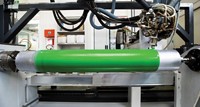Advertisement
Grab your lab coat. Let's get started
Welcome!
Welcome!
Create an account below to get 6 C&EN articles per month, receive newsletters and more - all free.
It seems this is your first time logging in online. Please enter the following information to continue.
As an ACS member you automatically get access to this site. All we need is few more details to create your reading experience.
Not you? Sign in with a different account.
Not you? Sign in with a different account.
ERROR 1
ERROR 1
ERROR 2
ERROR 2
ERROR 2
ERROR 2
ERROR 2
Password and Confirm password must match.
If you have an ACS member number, please enter it here so we can link this account to your membership. (optional)
ERROR 2
ACS values your privacy. By submitting your information, you are gaining access to C&EN and subscribing to our weekly newsletter. We use the information you provide to make your reading experience better, and we will never sell your data to third party members.
Environment
Designing Greener Chemicals Award
by Stephen K. Ritter
June 29, 2009
| A version of this story appeared in
Volume 87, Issue 26
Procter & Gamble and Cook Composites & Polymers (CCP) teamed up to win the Designing Greener Chemicals Award for creating Chempol MPS alkyd resin technology, which significantly reduces the amount of volatile organic compound (VOC) emissions from oil-based paints and coatings.
Millions of gallons of conventional oil-based alkyd paints and coatings are sold globally each year to create durable, high-gloss protective layers for building, industrial metal, and agricultural and construction equipment applications. Although these products contain green polyester resins derived from vegetable oils, they require petroleum-based solvents to dissolve the organic components and to attain the appropriate viscosity for optimal drying after application.
In recent years, increasing concern for improving indoor air quality and reducing ground-level ozone and smog by lowering VOC emissions has been spurring research efforts to find alternative paint and coating technologies without compromising product performance (C&EN, June 2, 2008, page 28). Chempol MPS is one of the outcomes.
These materials are made with Sefose brand polyesters, which are high-molecular-weight oils produced by esterifying sucrose with fatty acid methyl esters from vegetable oils in a solventless process. The combination of sucrose and vegetable oil creates polyesters that serve as both solvent and resin, enabling paint and coating formulations with performance attributes such as fast drying, high gloss, and film toughness. It also yields improvements in worker safety and air quality by emitting less than half the VOCs of petroleum-based alkyd paints and coatings.
Sefose polyesters are tailored for paints and coatings by selecting optimal fatty acid chain-length distribution, unsaturation level, and degree of esterification. When the paints and coatings are applied, the Sefose esters, just like traditional alkyd resins, undergo oxidative cross-linking with other constituents in the formulation and become an integral part of the film.
According to P&G and CCP, using Chempol MPS paints and coatings to replace conventional alkyd resin formulations could cut global VOC emissions by some 87,000 tons per year—the equivalent of the emissions from 7 million cars, reducing ground-level ozone by 215,000 tons, and saving 900,000 barrels of crude oil.
"We are excited to jointly commercialize this technology," says Camille Z. Chammas, general manager of P&G Chemicals. "It will be a win for paint manufacturers, our environment, and the consumers that use the resulting products."






Join the conversation
Contact the reporter
Submit a Letter to the Editor for publication
Engage with us on Twitter